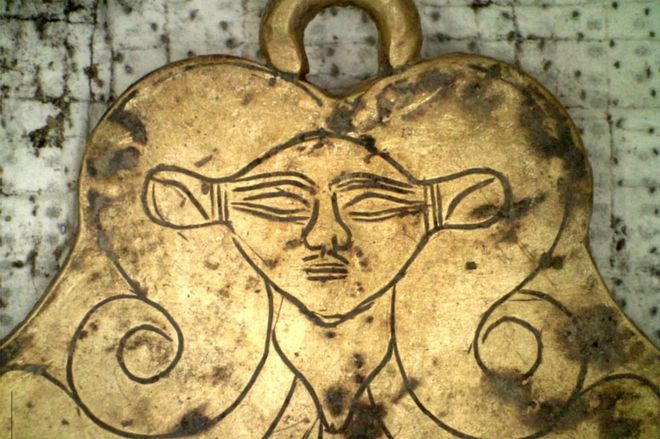
Jack Davis, head of UC’s classics department, said items such as the gold ring depicting two bulls with sheaves of barley gave an insight into life around the Mediterranean more than 3,000 years ago. “It’s an interesting scene of animal husbandry – cattle mixed with grain production. It’s the foundation of agriculture,” he said.
According to Martin Bernal , writer of “Black Athena” and Professor of Government and Near Eastern Studies at Cornell University, the appearance of the Bull symbolism in the Mediterranean area is linked to the emergence of the upper Kemetic pharaohs called Montuhotep. The Montuhoteps had as their divine patron the hawk (Heru/Horus) and the bull god Mntw or Montu.
He noticed that it was during the same century that the Cretan palaces (Crete is the largest and most populous of the Greek islands) were established and one finds the beginnings there of the bull-cult which appears on on the walls of the palaces and was central to Greek mythology about King Minos and Crete. Bernal wrote that it was plausible to suppose that the Cretan developments directly or indirectly reflected the rise of the Kemetic Middle Kingdom.
The fact that the scholars also discovered depictions of the African Goddess Hathor, completely validates Martin Bernal’s work.
The tombs were also littered with tiny pieces of gold leaf that had fallen from the walls.
In 2015 archaeologists at nearby Pylos found the grave of a high-status man whom they dubbed the Griffin Warrior after engravings of a mythological creature engraved in his tomb.
The tomb included armour, weapons, gold jewellery and an agate sealstone depicting two warriors fighting.

